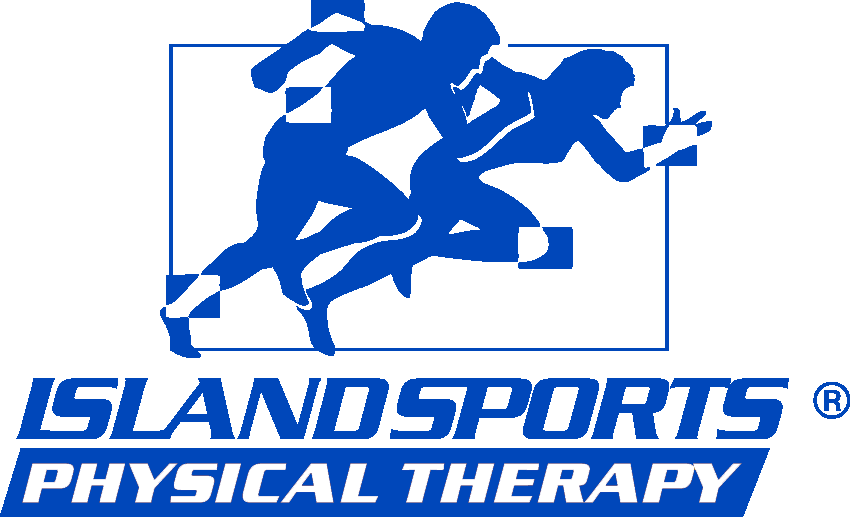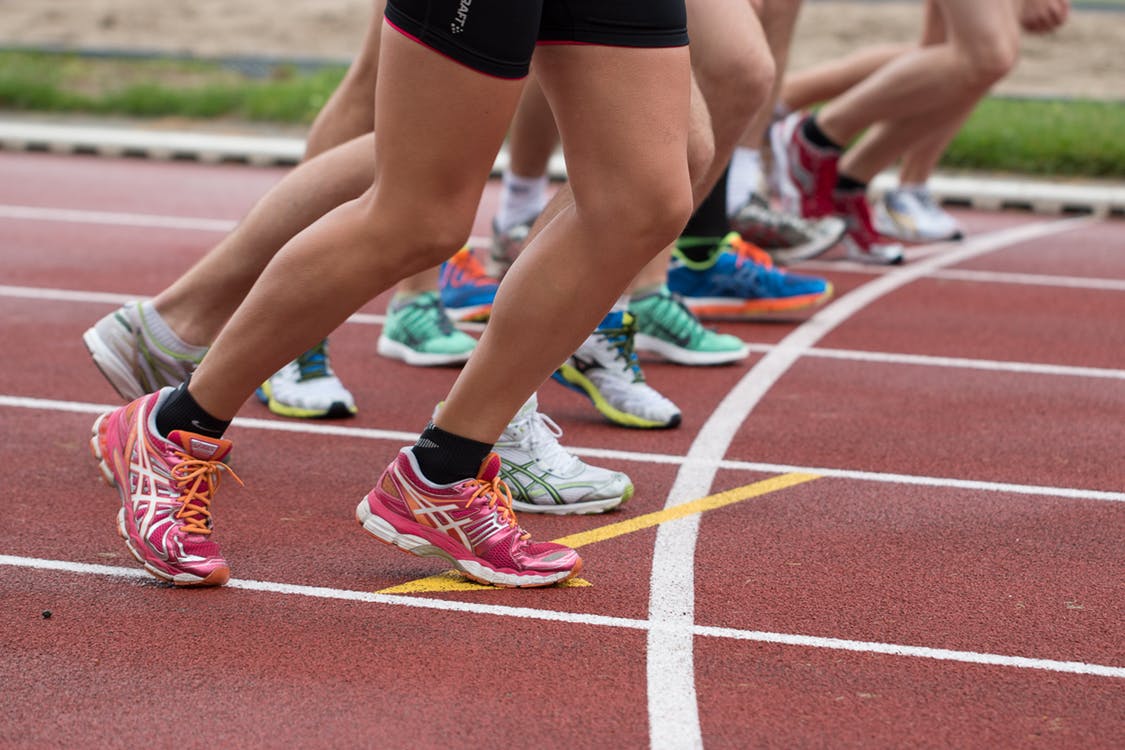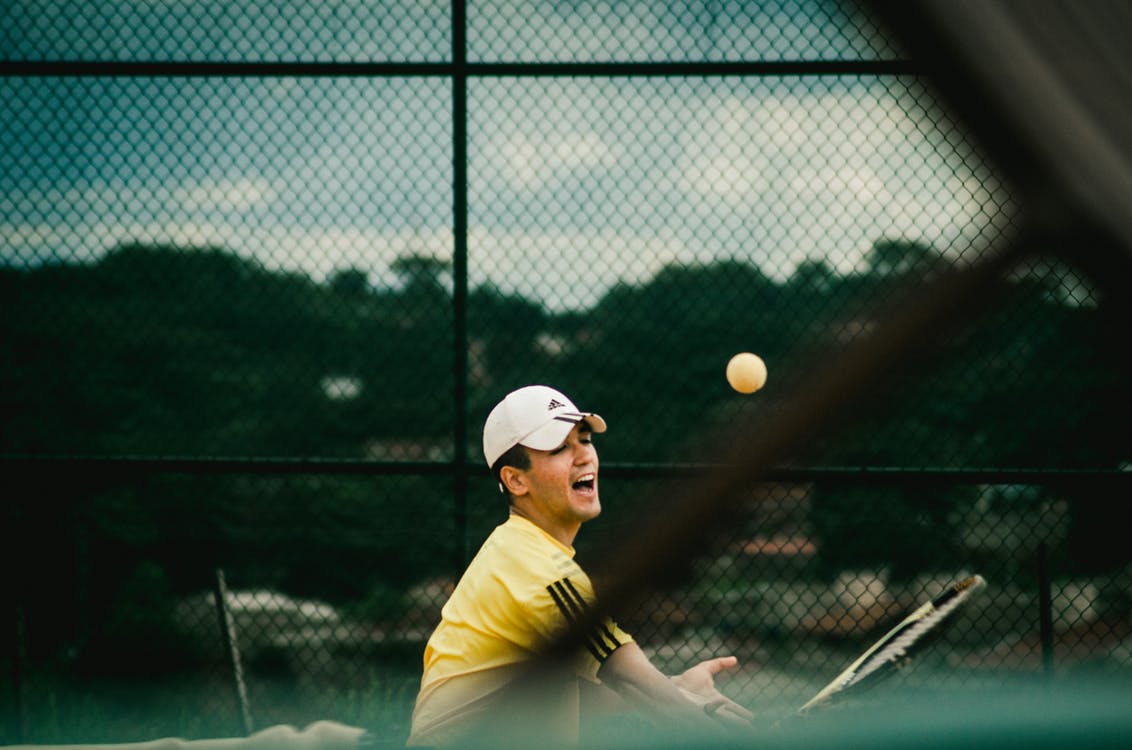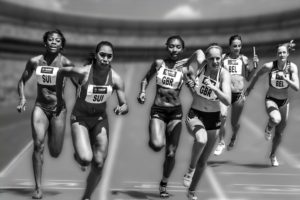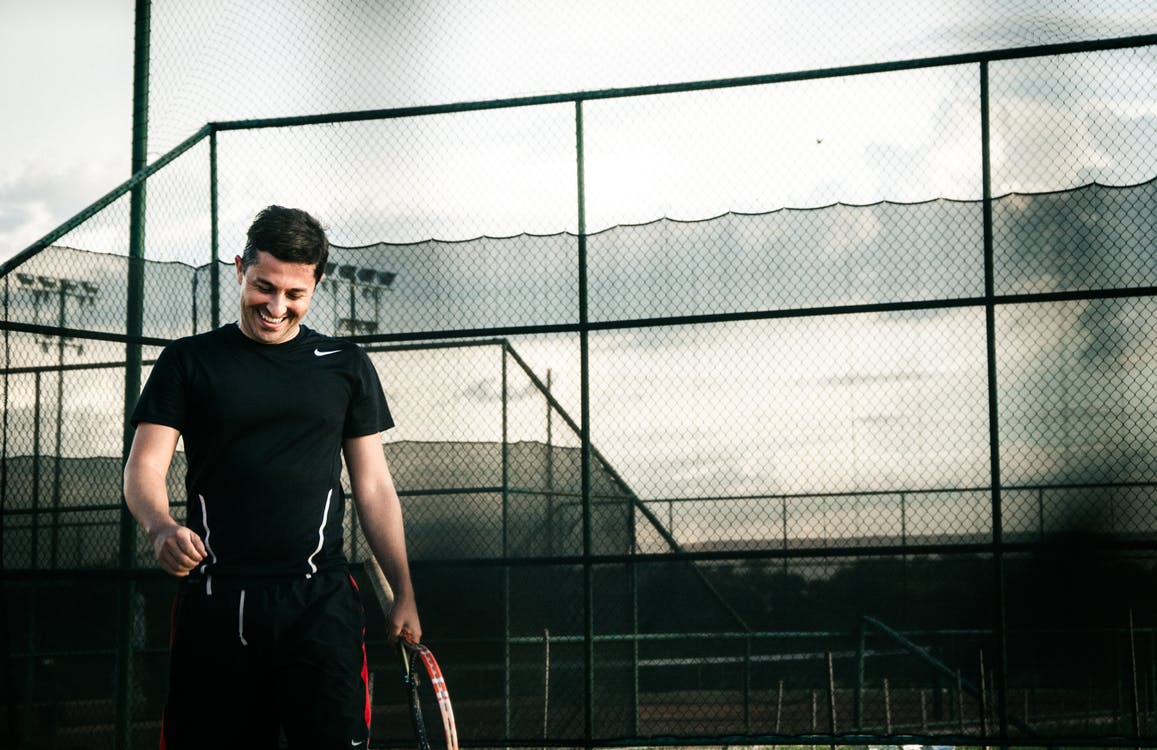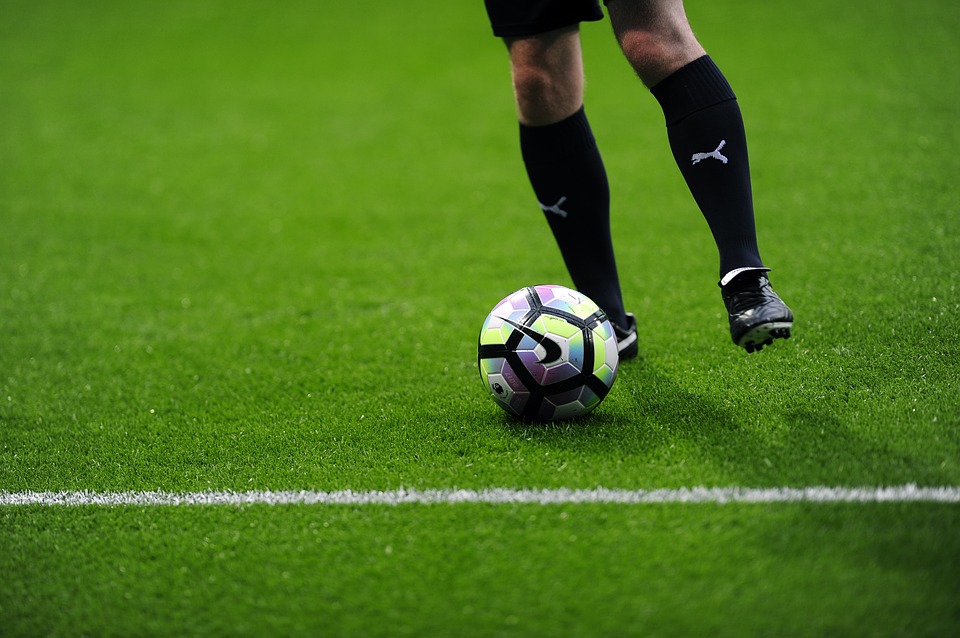Athlete’s Arthritis
While arthritis is a condition most of us have heard of, it’s not something that we completely understand. There are more than 100 types of arthritis, and it’s responsible for both joint pain and joint disease. Also, contrary to popular belief, arthritis can affect people of all ages, not just individuals who are older. Those who are especially vulnerable to arthritis are athletes, who are constantly putting wear and tear on their bodies. Researchers have seen that the risk of having hip or knee arthritis is 85 percent more likely in athletes. Island Sports Physical Therapy in East Meadow, East Northport, Huntington, Coram, Smithtown, and Glen Cove, can provide the best possible treatment for anyone suffering from arthritis.
Osteoarthritis, the most common form of arthritis, is something that affects many current and former athletes. Osteoarthritis is when the cartilage between your joints slowly breaks down, resulting in friction between your bones which results in swelling, stiffness, and pain. Because of high-impact pressure on joints from sports like basketball or football, your body is being put at risk. Island Sports Physical Therapy has the staff and resources available to treat any injury you get.
How to Treat Arthritis
The first step to treating any symptoms of arthritis is to get the best care possible. Physical therapy in East Meadow is a great way to recover from any joint pain you may have and can prevent any future discomfort from occurring. Here are some ways physical therapists can treat your arthritis:
- Posture – physical therapists can teach you the best body mechanics and proper posture for pain relief and improved function for daily activities.
- Treatment Options – splints and braces to support weak joints have the ability to reduce the stress that may be put on your body. Other treatments like hot and cold therapy can also help ease stiffness and joint discomfort.
- Environment – changing your living arrangement can certainly help in a recovery process. Ergonomic chairs can provide excellent support for your body and relieve back and hip pain.
- Exercise – aside from improving muscle strength, exercise can also reduce pain and improve blood circulation. Losing any excess weight can also result in less stress put on the joints. In fact, a recent study found that losing a pound can be the equivalent of nearly four pounds of pressure off the knee.
- Proper Resting – with proper exercise, allowing yourself to get enough rest is important in treating arthritis. Long periods of rest can result in tight joints. Scheduling periods of rest can help you avoid stiffness, while also averting the possibility of overworking your joints.
Treatment as soon as possible can make the recovery process for treating arthritis more successful. While rehabilitation may be difficult, it will allow you to do the things you love without having to worry about chronic pain. Island Sports Physical Therapy in East Meadow can help athletes and people of all ages improve their lives and treat their arthritic pain. Contact us today.
Tommy John Surgery
Have you ever heard of Tommy John Surgery? If so, you probably know that Tommy John Surgery (TJS) is extremely common among athletes- specifically baseball pitchers. TJS involves the reconstruction of the ulnar collateral ligament (UCL) in the elbow. During this procedure, the surgeon uses a tendon from somewhere in the patient’s body to replace the injured ligament in the elbow.
When the ligament has acquired too many tears over time, pain and instability develop within the joint- sometimes requiring what is called “Tommy John Surgery.”
Rehabilitation of this area can be done with a physical therapist. If you’re looking for a great PT to help deal with the aftermath of TJS, contact us at Island Sports Physical Therapy in East Meadow or any of our other locations.
What should I expect after surgery?
The entire rehabilitation process will most likely take up to one year– possibly longer.
Some TJS procedures follow a three-phase rehabilitation which includes:
Phase 1
(Immediately following surgery)
- Your elbow will be immobilized in a brace positioned at a 60 to 90-degree angle for about 1-2 weeks following your surgery.
- Your doctor and physical therapist might recommend that you begin rehab by doing range-of-motion exercises.
- Island Sports Physical Therapy in East Meadow and all of our other locations offer sports specific rehabilitation and training.
Phase 2
(After the first 1-2 weeks)
- A range of motion is the primary focus of physical therapy at this point.
- You may wear an arm sling for comfort, or a hinged brace.
Phase 3
(The end of the first month following surgery)
- About 6 weeks post-operation, you may be advised to begin strengthening exercises.
- You may be able to fully extend your elbow.
At Island Sports Physical Therapy in East Meadow and all of our other locations as well, we provide sports specific therapy including specific sports training to get you back to playing your sport following your Tommy John Surgery. The goal of TJS is to ultimately restore function without pain, increase a range of motion and stability, and prevent further damage to the elbow joint. If you or someone you know recently had Tommy John Surgery, please contact us here to make an appointment with one of our physical therapists to begin the rehabilitation process.
Physical Therapy in Glen Cove
-
Prepare your home – activities including cleaning out gutters and roof leaks, insulating water lines and other options can ensure your home is warm and safe. Along with this, checking your heating system, fireplace and carbon monoxide alarms are also important for a safe winter.
-
Outdoor precautions – the most important thing to realize when doing an arduous activity, like shoveling or working on icy platforms, is to work slowly. Working too hard can result in stressing muscles or slipping and seriously injuring yourself. When working, it’s important to always carry your cell phone and to bring an emergency kit.
Physical Therapy in Huntington
Fall sports, whether it’s football or soccer, have the potential to wear down the athlete’s ability to perform at their highest level. One of the most common injuries during this time of the year are ankle sprains, which might seem tame in terms of other physical problems, but can be an issue over time. In the United States alone, 25,000 Americans suffer from ankle sprains daily, which accounts for almost 50 percent of all sports-related injuries. When you take into consideration the fact that athletes suffering from ankle injuries are five times as likely to suffer another ankle injury, it shows that these types of problems should be avoided at all costs. Island Sports Physical Therapy in Huntington can not only help heal an ankle injury, but they can give necessary steps to avoiding an ankle related issue from happening again.
To avoid the stress of a sprained ankle, follow these tips on how you can avoid sustaining an injury:
Stretching before/after workouts – Although this is something most people do before working out, it’s still important to give yourself some time for your body’s muscles to loosen. Anything from a light jog to stretching your legs can be beneficial in reducing the risk of ankle injury. After your workout, give yourself some time to stretch out any tense muscles that may have been aggravated by physical activity.
Muscle conditioning – Strengthening and building up your muscles around sensitive body parts can prevent an injury from happening while building up a range of motion and mobility as well. A great way to build muscle in your lower body is through cross-training, which can be extremely beneficial to an athlete. Physical therapy in Huntington can give you any advice on how to gain back your strength and recover properly.
Avoid uneven surfaces – When going for a run, try to stay on a track or a surface that is mostly flat. Running on roads that have slopes, ditches, potholes, and other hindrances can certainly injure you. However, if you’re racing and the course is not necessarily smooth, you should cautiously train and learn the route to avoid any surprises.
If you are looking for physical therapy in Huntington, East Northport, Smithtown, Glen Cove, East Meadow, or Coram, contact Island Sports Physical Therapy today!
COMING BACK FROM A MENISCUS TEAR
A meniscus tear is a common knee injury. The meniscus is a rubbery, C-shaped disc that cushions your knee. Each knee has two menisci (plural for meniscus) which helps keep your knees steady by balancing your weight across the knee.
In most cases, a meniscus tear is caused by twisting or turning quickly, while your foot is planted and your knee is bent. Lifting something heavy and playing sports can also lead to a torn meniscus. The healing process depends on the severity of your injury and physical therapy is usually needed. Island Sports Physical Therapy can provide you more information on a meniscus tear and can help guide you on your way to a successful recovery.
Treatment:
Usually a physical exam and an X-ray is needed in order to help your doctor find out if a torn meniscus is causing your pain. Treatment for a torn meniscus depends on the type of tear, where it is, and how serious the injury is. Some treatment options you can consider:
- -Physical Therapy
- -Rest
- -Ice and wrapping the knee with an elastic bandage
- -Propping up the leg on pillows
- -Surgery to repair the meniscus
- -Surgery to remove part of the meniscus
- -Support tape
Blood flow is essential for healing and will help your knee injury heal quickly and completely.
Recovery from a meniscus tear can vary significantly, especially if surgery was required. The heavier and older you are, the longer your recovery will be.
Contact us!
Island Sports Physical Therapy has a solid understanding on how to treat your meniscus tear. With years of experience and with the help of our professionals you will be on your way to recovery! At Island Sports Physical Therapy we want the best for our patients. We guarantee that after each visit you will be one step further towards your recovery! Don’t wait and give us a call today!
What is an ACL Injury?
Your anterior cruciate ligament, or ACL, is an important ligament in your knee because it connects the patella (top portion of the knee) to the tibia (bottom portion of the knee) and gives the knee rotational stability. An ACL injury is one of the most common injuries in sports, and based on statistics, female athletes are 2 to 10 times more likely to suffer from an ACL injury than male athletes. Injuries usually occur from quick movements made by the athlete such as pivoting, cutting, or jumping and landing the wrong way. If you have recently suffered an ACL injury and are looking for Physical Therapy in East Northport, let our team at Island Sports Physical Therapy get you back in the game!
Why are Women More Likely to Suffer an ACL Injury?
While there is no definitive reason why women are more likely to tear their ACL’s than men, there are a few factors that can contribute to this injury. They are:
- Hormones: The estrogen hormone that exists in women can be a potential cause of their ACL tears. High levels of this hormone in the body weaken the ACL, making it more prone to injury.
- Bone Structure: Women are born with wider hips than men so that they have the ability to carry and birth a child. This skeletal structure results in more weight being put on a woman’s knees than a man’s, which can lead to them putting a lot of strain on the surrounding ligaments, muscles, and tendons.
- Muscle Strength: As we mature, women seem to have weaker leg muscles than men do. These muscles include the glutes, buttox, hamstring, and quads. For this reason, it is important that women work on strengthening these muscles in an effort to take the strain off their knees and prevent an ACL injury from occurring.
What Exercises Can I Do to Prevent an ACL Injury?
As mentioned before, the muscles you want to focus on are your glutes, buttons, hamstring, and quads to prevent an ACL injury. Here are some exercises that can be very helpful:
- Squats
- Deadlift
- Swiss Leg Curl
- Glute Bridge
If you are looking for physical therapy in East Northport, let our physical therapists at Island Sports create a personalized program that will focus on strengthening leg muscles as well as improving the flexibility of your knee. Visit our office today!
How to Deal with Tennis Elbow
What is Tennis Elbow?
Tennis Elbow, also known as Lateral Epicondylitis, is a form of tendinitis. Tendinitis is the swelling of the tendons, which in this form, causes pain in the arm and elbow. Despite its name, there is a small group of people diagnosed with Tennis Elbow that actually play Tennis. If you are straining the muscles around the elbow over and over again during any activity, it could happen. If you are looking for physical therapy in Nesconset, Island Sports Physical Therapy will help you not only feel better, but we will educate you on the injury in hopes to prevent future re-injury of Tennis Elbow.
Symptoms:
1. Upper Forearm Pain
This is a very common symptom of Tennis Elbow. On the outer arm, right below the elbow is where this “burning pain” commonly occurs.
2. Is Rest Bringing You Relief?
If you are looking for physical therapy in Nesconset, rest is not bringing you relief and you cannot move your elbow or are even losing feeling in it, contact us for quality care.
3. Pain Variations Throughout Your Day
The morning is usually the time where you will experience the most pain. The stiffness and aching lessen throughout the day but will still continue at some level.
4. Too Much Activity Hurts!
If you have Tennis Elbow, common activities and tasks such as lifting your fork or holding a pen may hurt. Moving your wrist forcefully such as twisting your arm to open a heavy door or repetitive computer mouse use will also cause you pain.
Treatment at our Physical Therapy Practice in Nesconset
- Reducing Inflammation
- Rest
- Reducing Pain
- We will give you pain reducing remedies to do at home, such as icing.
- Ongoing Rehabilitation
- Exercise and other physical therapy treatments to increase your range-of-motion and decrease pain at the same time.
- Bracing/Compression by wearing a counterforce brace for Tennis Elbow. The strap used will spread pressure throughout your arm, instead of putting it all on your tendon causing your pain.
- Working with an expert here at Island Sports Physical Therapy to fit your individual needs.
How Physical Therapy Could Help
DON’T WAIT! The longer you wait to see a physical therapist and perform strenuous activities, the longer rehabilitation will take. Ongoing activity to the tendon can cause damage and could someday require surgery.
How Physical Therapy in Nesconset Could Help
- We will correctly diagnose you
- We will give you “hands-on” care
- We will educate you
- We will give you home remedies that fit your individual need
- We will maximize your performance
Working with one of our experts here at Island Sports Physical Therapy will help specify your injury to know the exact treatments that need to be done. We promise to educate you and give you the best care possible while giving you the information you need about Tennis Elbow and give you ways to prevent this injury from happening again in the future.
Frequent Shoulder Dislocation
The shoulder is among the most mobile joints in the human body. The persistent utilization of this joint is common for athletes that play sports like baseball, volleyball, and swimming, which may cause dislocation. This is due to the constant wear and tear of ligaments and tendons that surround the shoulder joint. At Island Sports Physical Therapy, our physical therapists in our many locations including Huntington, East Northport, Glen Cove, Nesconset, East Meadow, and Coram are here to create tailored rehabilitation programs that will get you back on the court, in the pool, or on the field in no time!
What are My Symptoms?
Once an athlete has dislocated their shoulder, the chances of it dislocating again increase, causing an instability in the joint. The following symptoms of such instability include:
Treatment With Physical Therapy in Huntington, NY
Depending on the severity of the injury, the average healing period for a dislocated shoulder is between 4 and 12 weeks. Our physical therapists in Huntington, NY will conduct a complete assessment in order to create a program tailored to the specific needs that will help you get back in the game! These programs may include exercises that focus on:
- Strength: After a dislocation injury, the muscles around the joint may be extremely weak. Depending on the severity of the injury, our therapists may incorporate certain exercises that will build up those weak muscles.
- Range of Motion: Our therapists will take you through the motions as well as gently stretch you in order to help you gain back that range of motion.
- Your Specific Sport: Our therapists will create exercises that are tailored to your specific sport which can help you regain comfortability with the motions.
Above all, it is important that you give your body a chance to rest once you’ve had a shoulder dislocation injury. Failure to do so will only prolong the healing process and cause the injury to recur. Our physical therapists in Huntington, NY at Island Sports Physical Therapy are dedicated to helping you heal and get you back to your top performance levels. Please visit us at our many locations in Huntington, East Northport, Glen Cove, Nesconset, East Meadow, and Coram or call us at 631-462-9595 today!
Recovering from ACL surgery
An ACL tear happens when the knee experiences sudden twists or changes in direction. People who play high-impact sports are especially susceptible to ACL tears. These sports include but are not limited to soccer, football, basketball, volleyball, etc. When an ACL is torn, there is typically a popping sound, swelling, and pain.
ACL surgery typically features a graft that involves taking a ligament from another part of the body to replace the torn ACL. Recovery from an ACL tear can take anywhere from 6 to 12 months. The help of a physical therapist is crucial to the success of your recovery. Island Sports Physical Therapy has offices all over Long Island in East Northport, Huntington, Nesconset, Coram, East Meadow and Glen Cove. They specialize in sports specific therapy and are more than capable of helping you return to playing soccer after ACL surgery.
ACL surgery recovery features:
- Right after the surgery, you should immobilize your knee to aid the healing process.
- After surgery, you should use ice to reduce swelling of the knee.
- Gradually placing weight on the knee with or without the aid of a knee brace or crutches.
- Your physical therapist will then help you achieve full range of motion with the recovering knee.
- Muscle strengthening exercises will be incorporated into your recovery to help regain strength lost during the immobilization phase.
- The later stages of recovery involve advanced strengthening techniques, advanced cardio exercises, and balance/stability exercises to strengthen the new ACL.
Even though a physical therapist is crucial to your ACL tear recovery, misinterpreting their advice or pushing yourself too fast can do more harm than good. In fact, it can make your recovery longer as well as lead to additional surgeries.
Contact us!
If you’ve had ACL surgery and wish to have a speedy recovery to be able to return to soccer contact one of Island Sports Physical Therapy’s Long Island offices today!
Men’s Lacrosse Injuries
Lacrosse is America’s fastest-growing sport, in the past decade, high school lacrosse has exploded. The sport has four major versions that have different sticks, fields, rules, and equipment: men’s field lacrosse, women’s lacrosse, box lacrosse, and intercrossed.
Although lacrosse is growing at a rapid speed, it also comes with a lot of potential injuries. Due to the different rules between the men and women, it is important to understand how injuries can occur in both versions. Lacrosse injuries are also more common in males because it’s a contact sport. The women’s game does not allow body contact but does allow the stick to stick contact.
Common Lacrosse injuries include:
- Ankle Sprain
- Head and face contusion
- Concussion
- Knee sprain (ACL, MCL)
- Wrist fracture
- Hip flexor strain
- Low back pain
- Shoulder separations
- Shoulder subluxations
- Quadriceps strains
Overall, lacrosse is a moderate risk sport in which the vast majority of injuries can be corrected by a physical therapist. That being said, a number of common injuries do occur in both men’s and women’s lacrosse as a result of contact with a player, another stick, or the ball.
Some ways to prevent injuries are, wear the right equipment, know the rules of the game, take a break, and report all injuries. Also stay in shape all year round and warm up properly by thoroughly stretching and gradually increasing the intensity of the workouts.
With any injury, participation should be stopped until an assessment is made by a qualified health professional. For athletes who have experienced a sports-related injury such as lacrosse, Island Sports Physical Therapy will help to speed up recovery and restore function. So the player is ready to get back in the game.
At Island Sports Physical Therapy we believe that patients need to coincide with their physical therapy and treatment.
